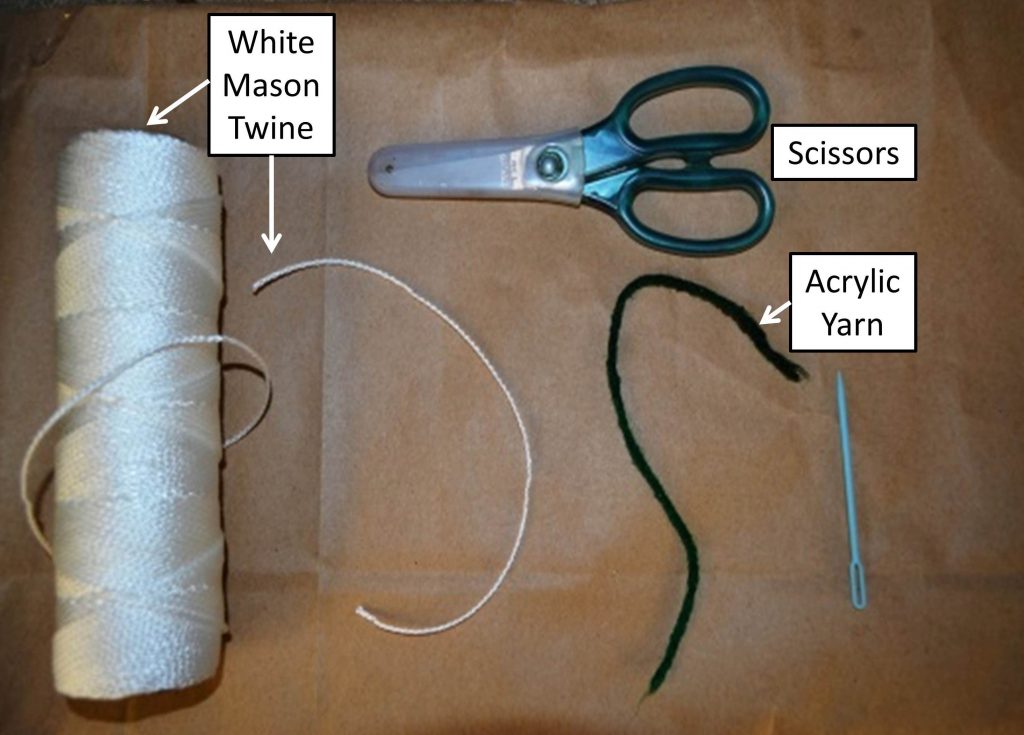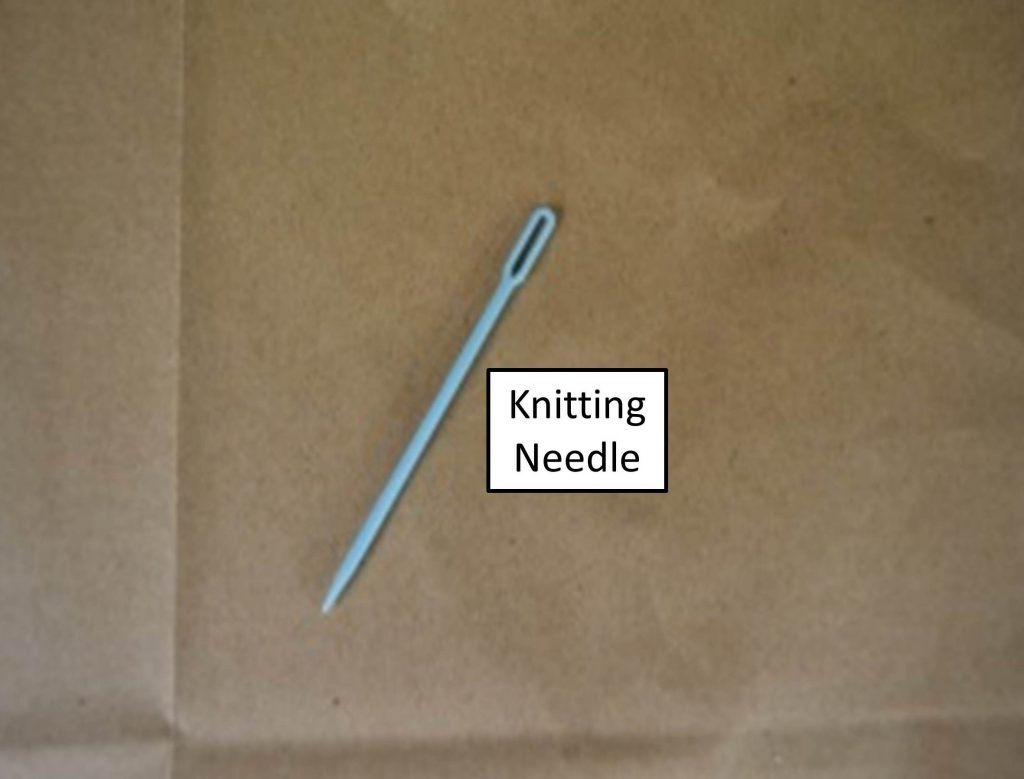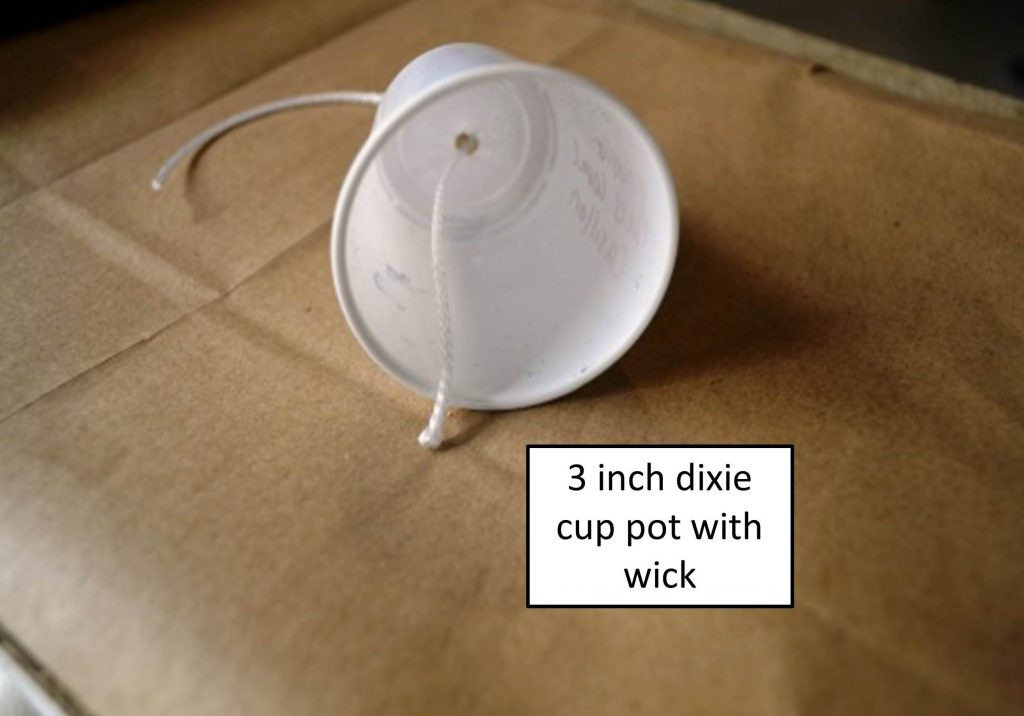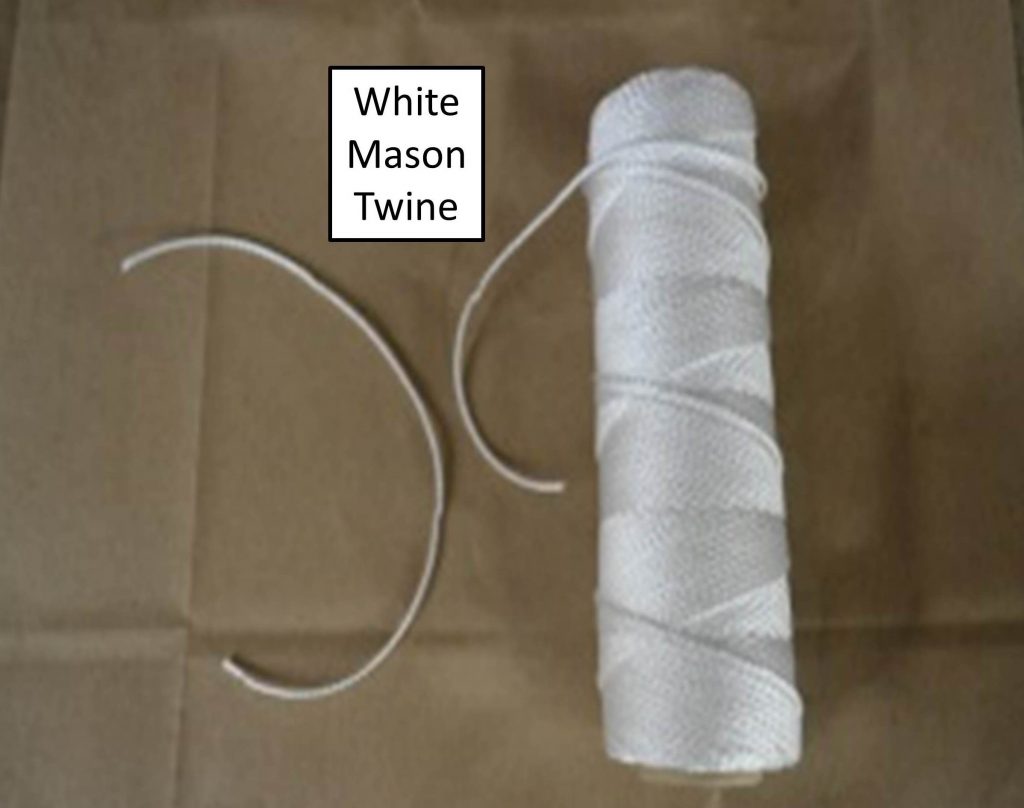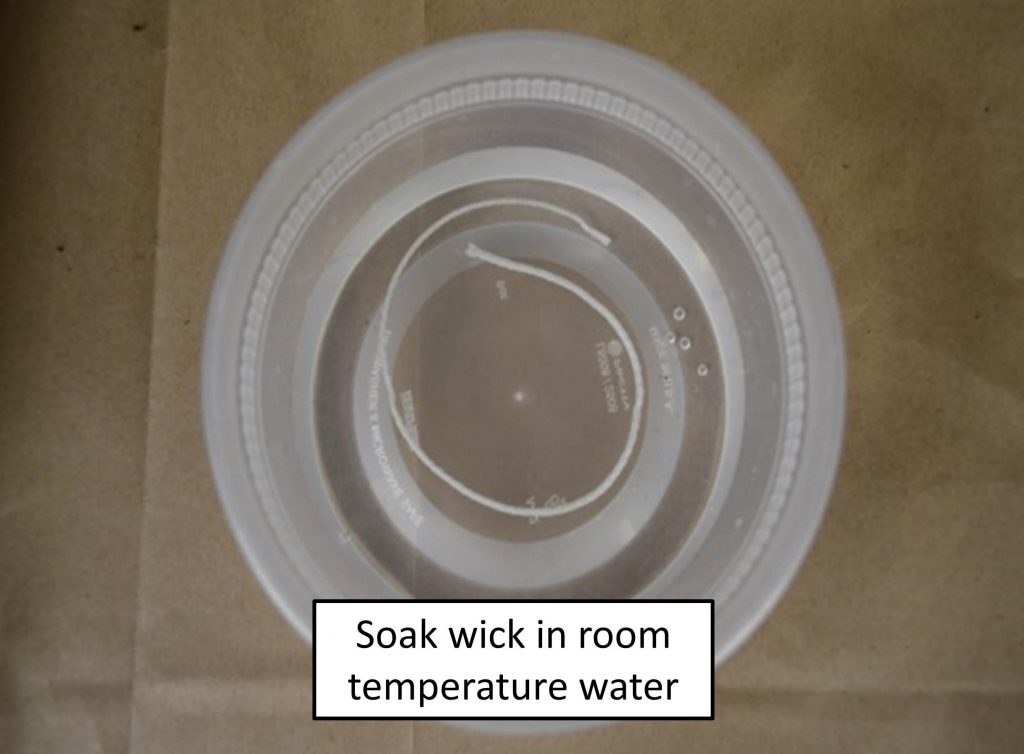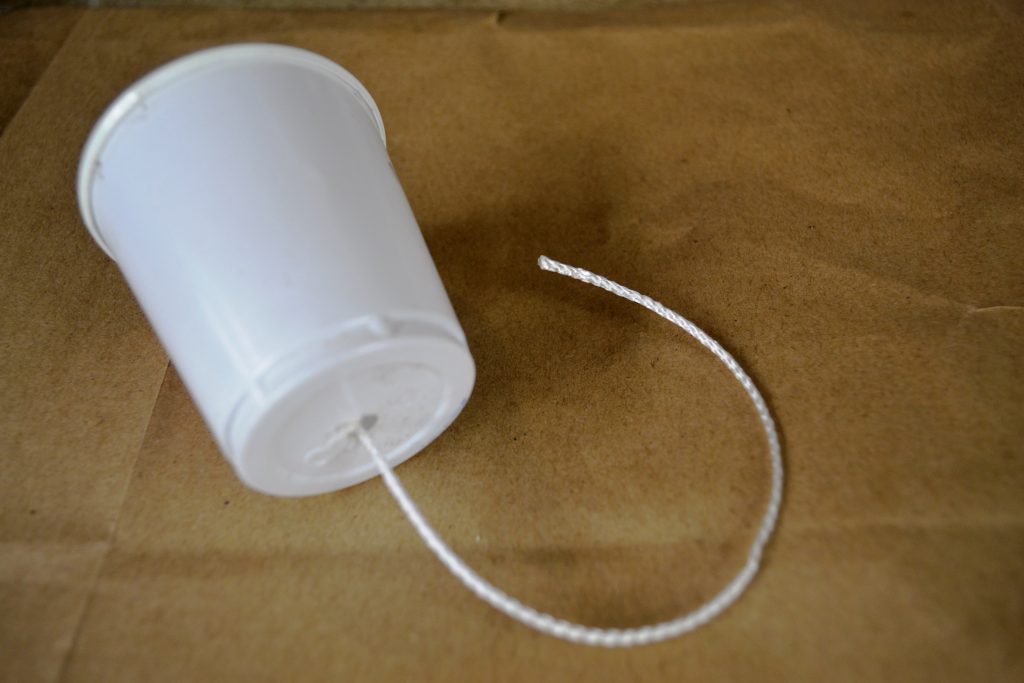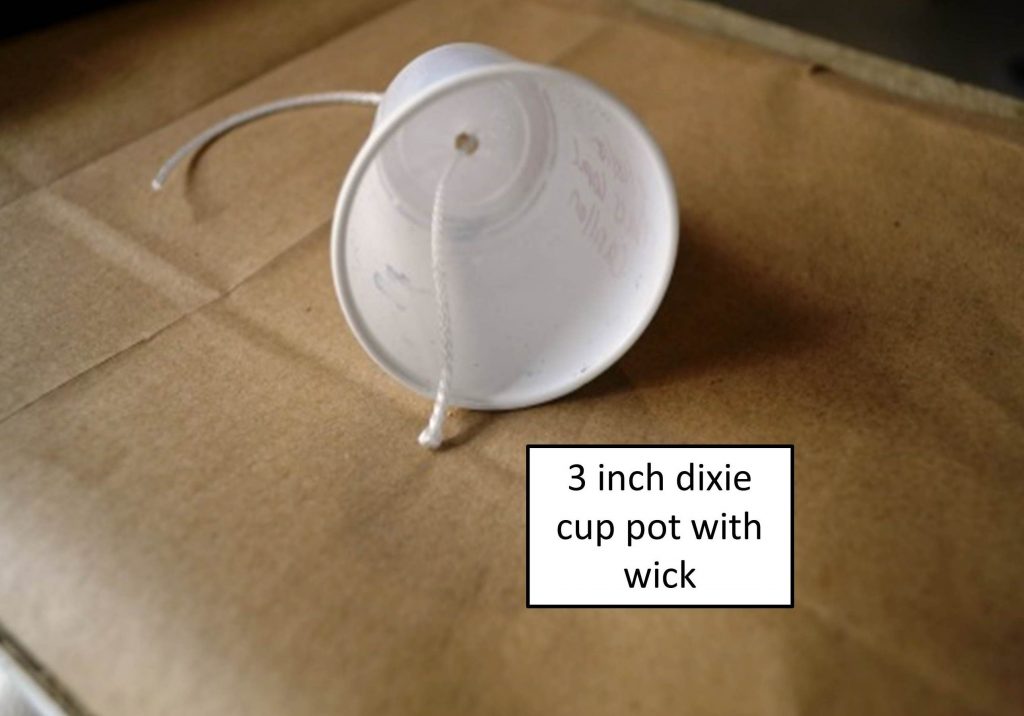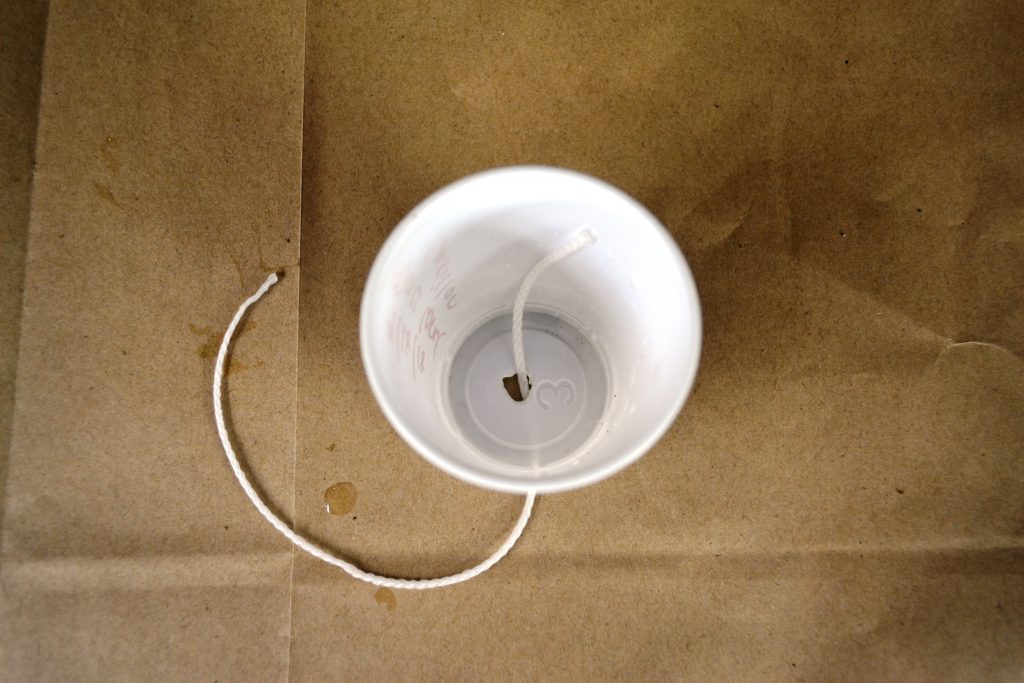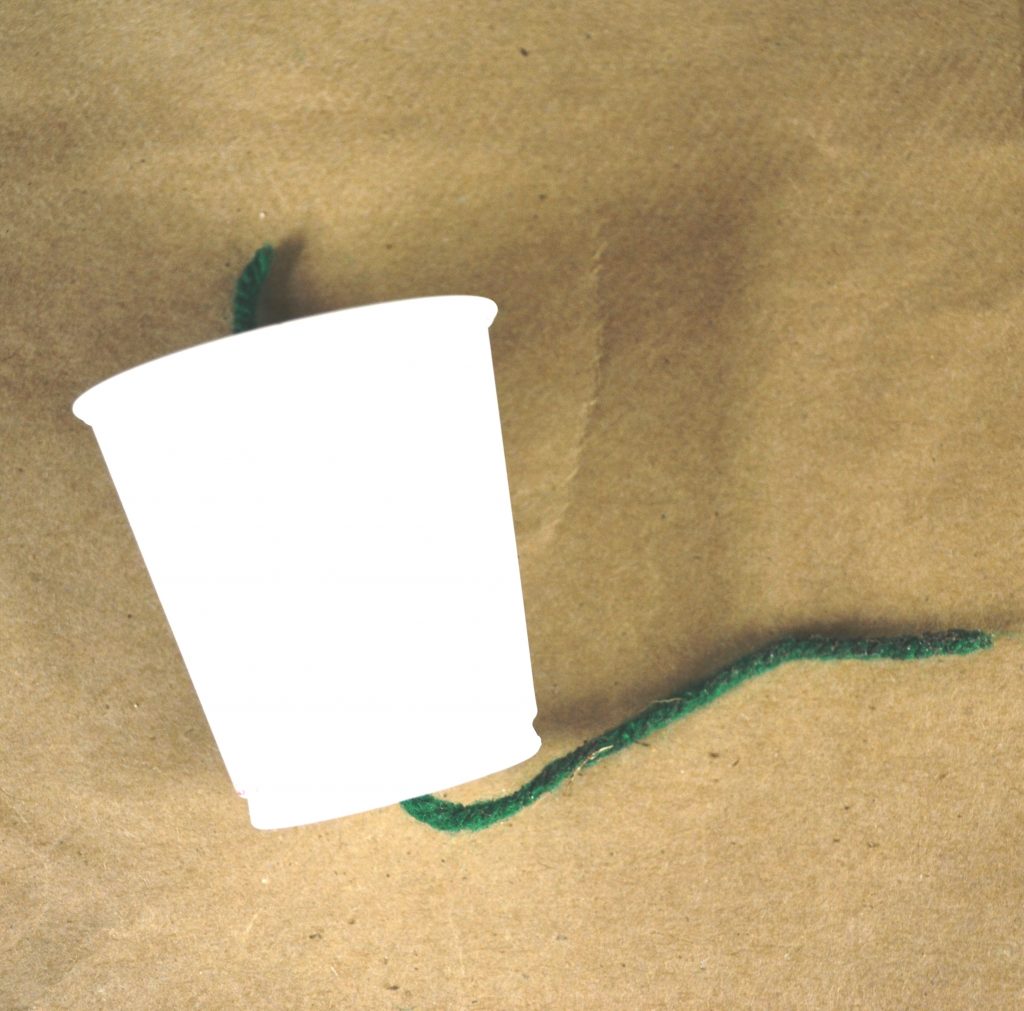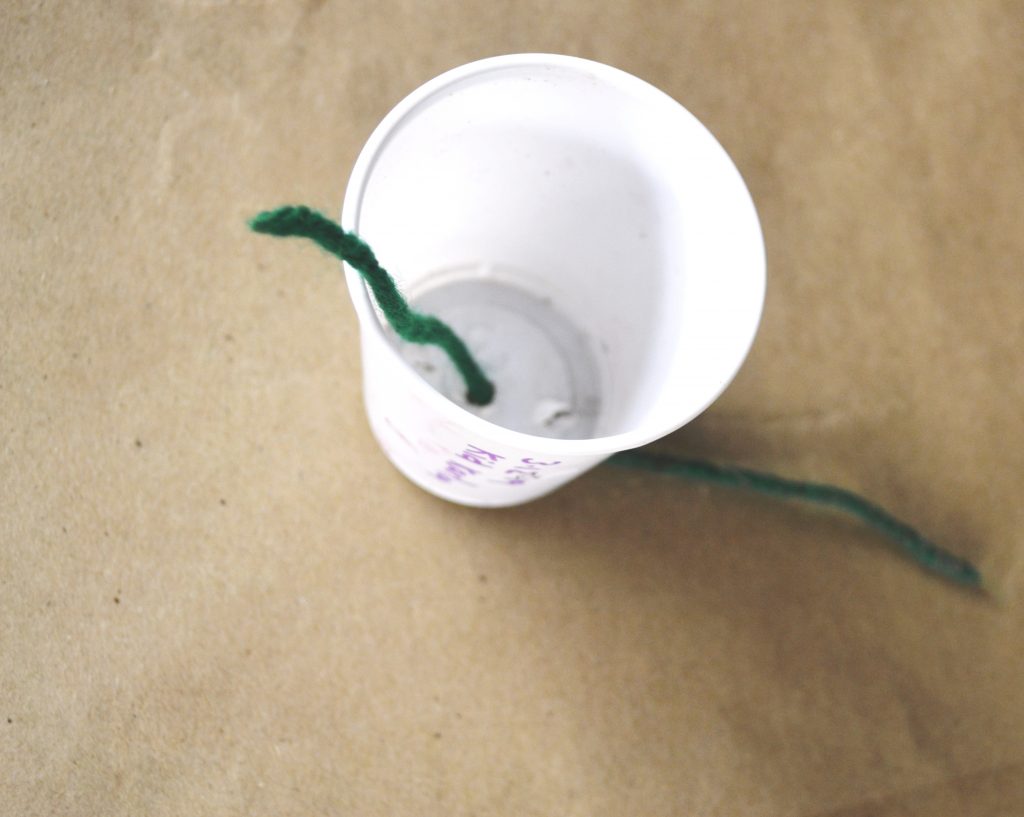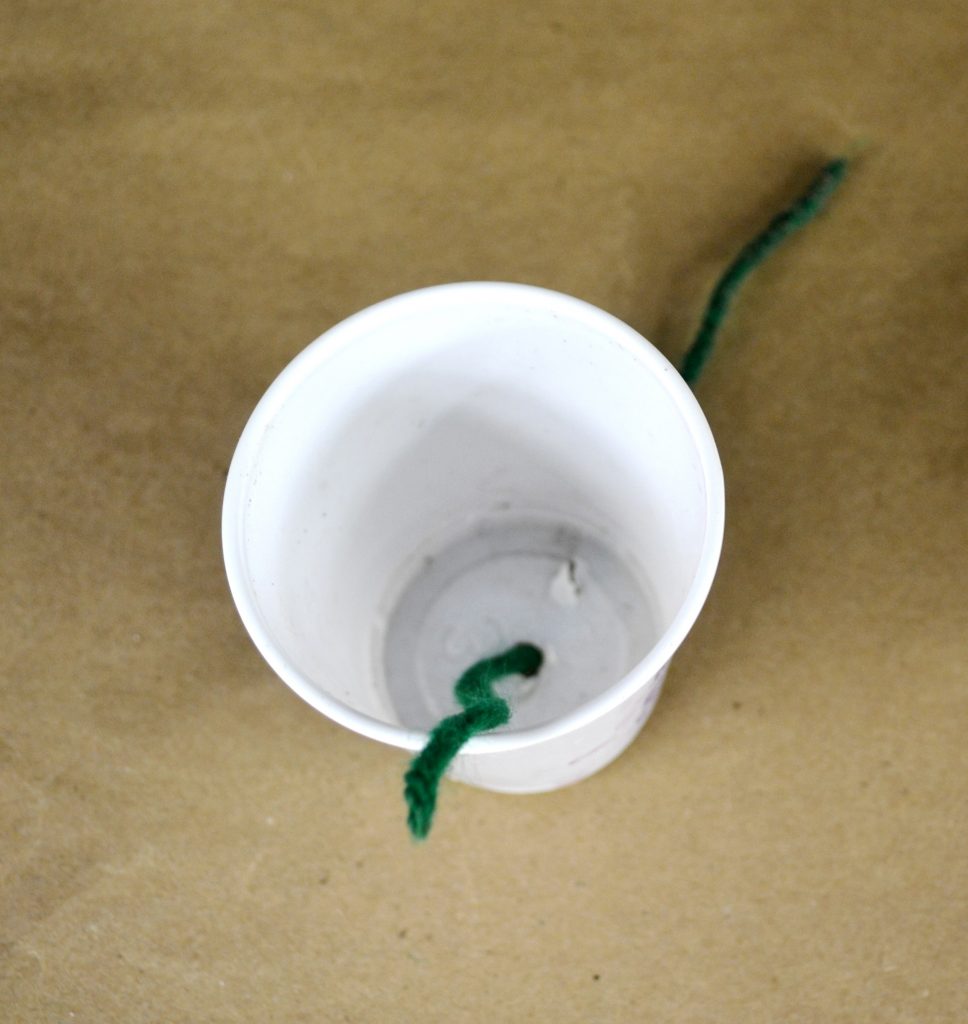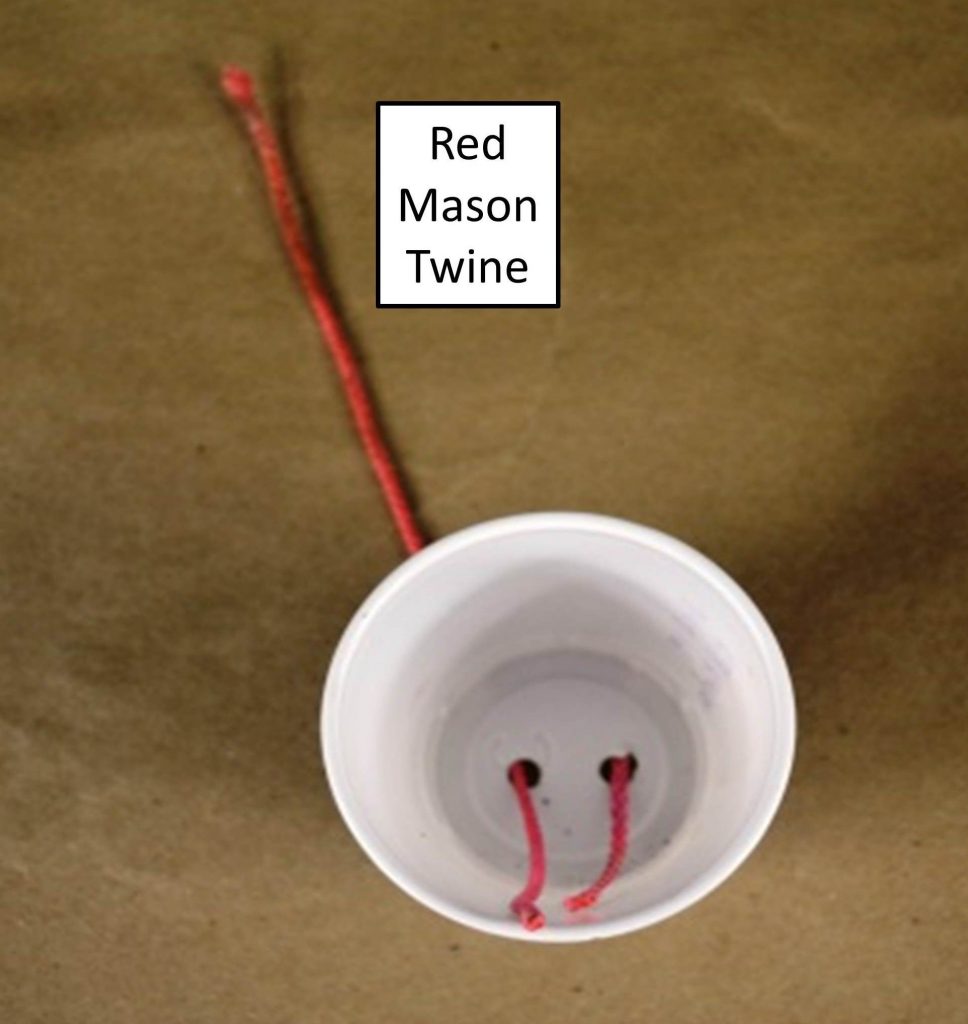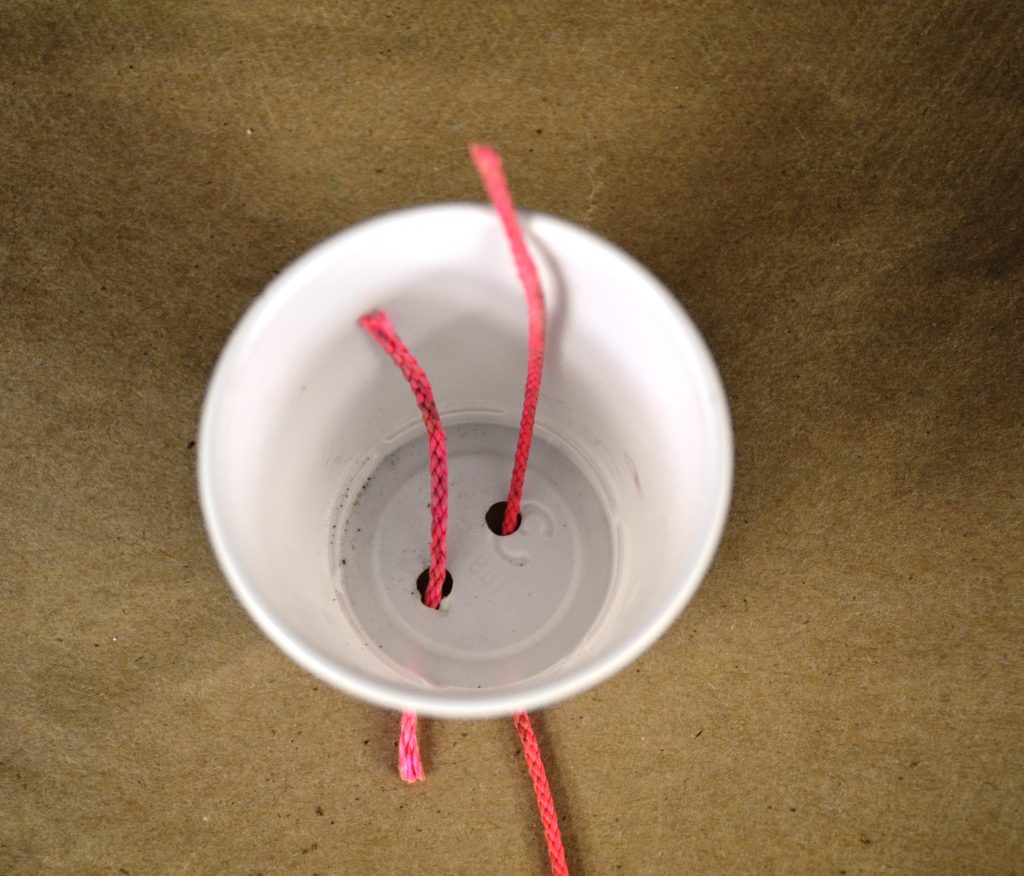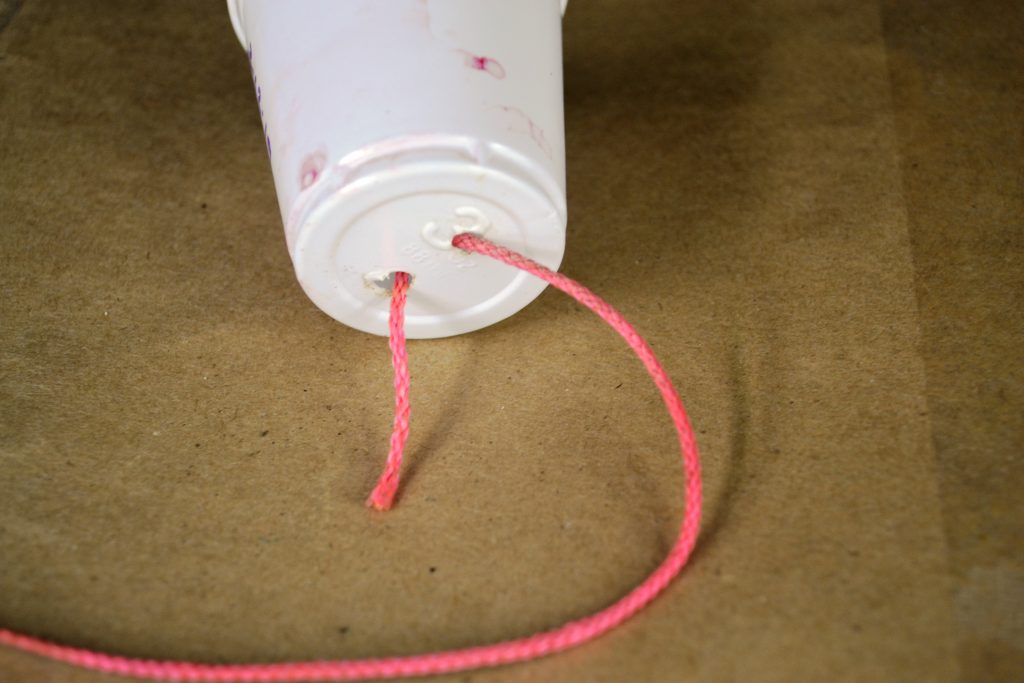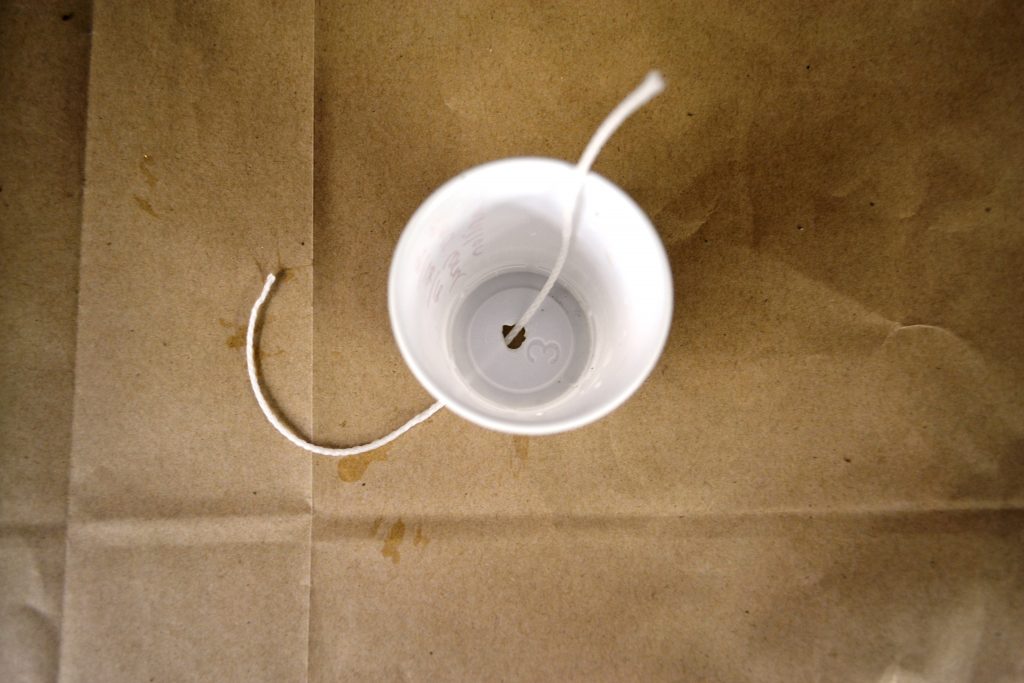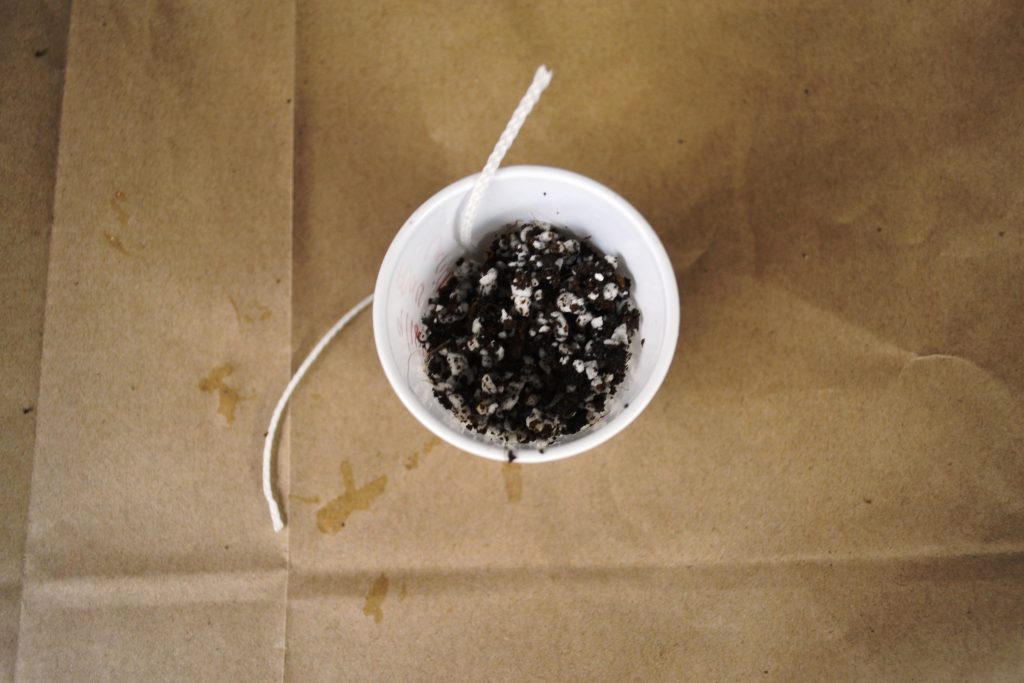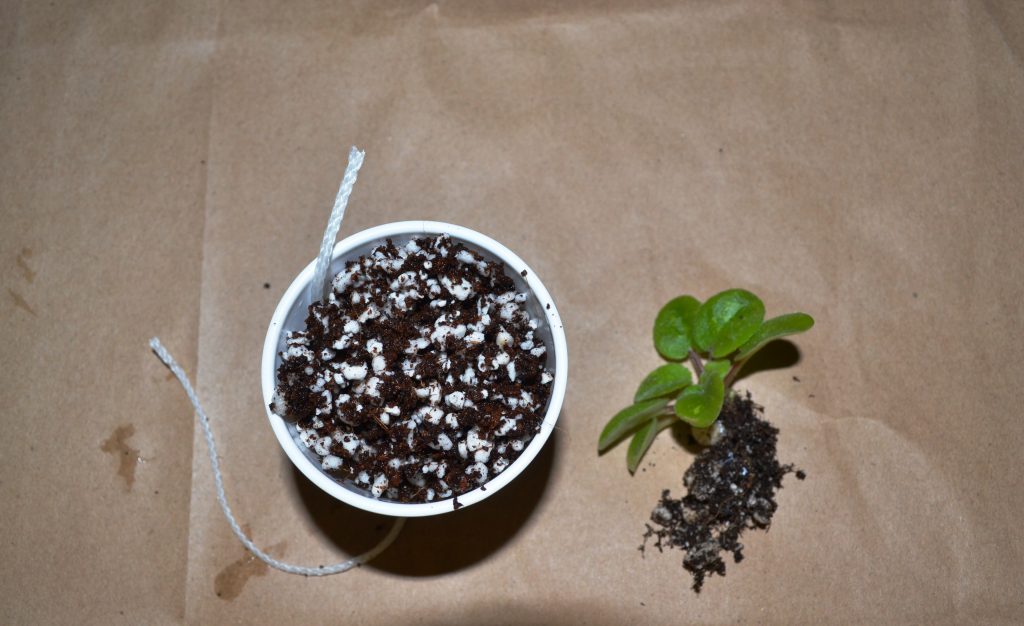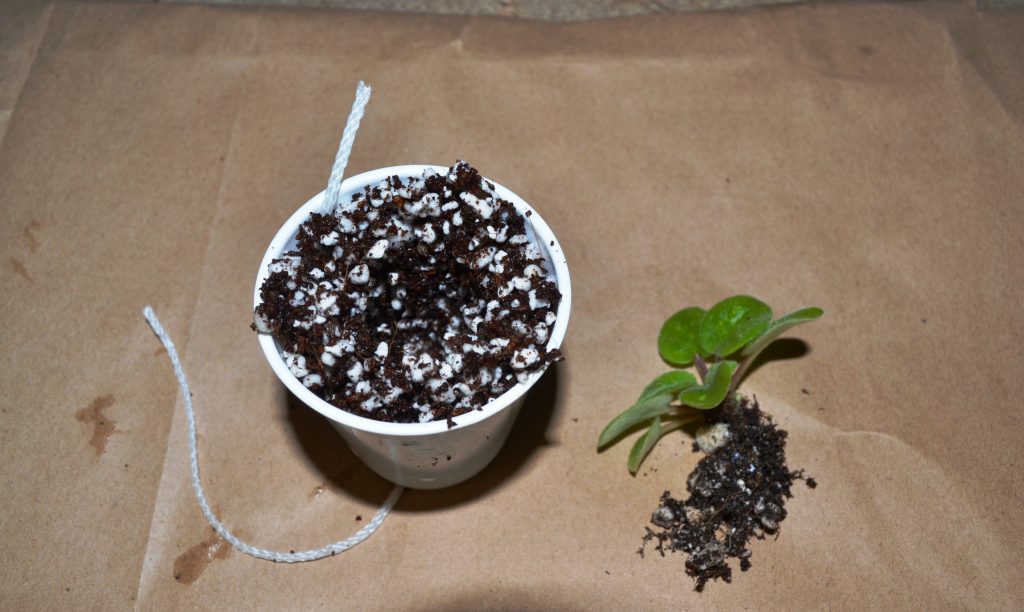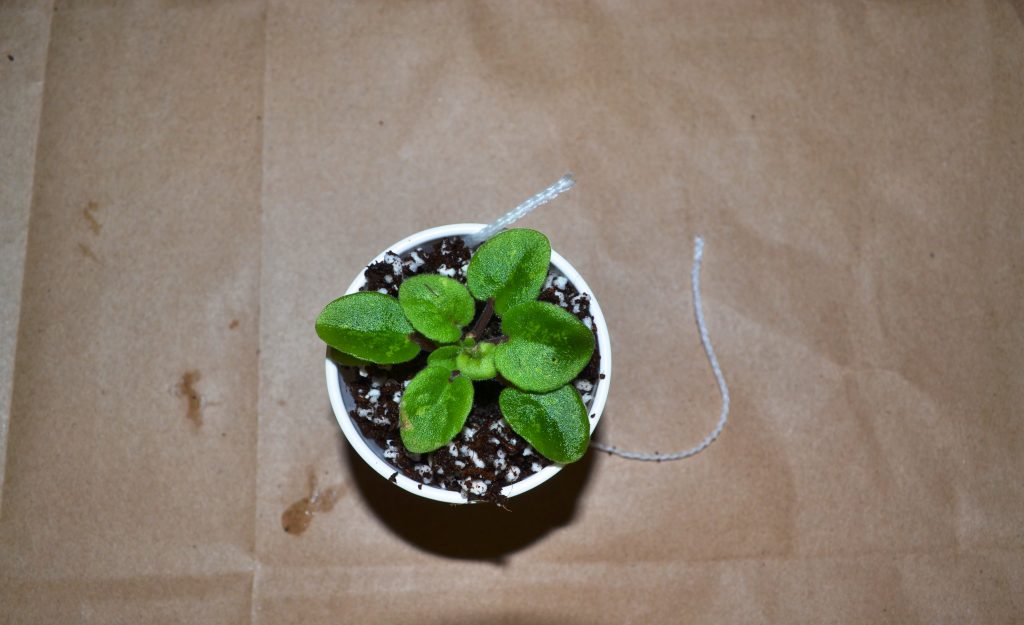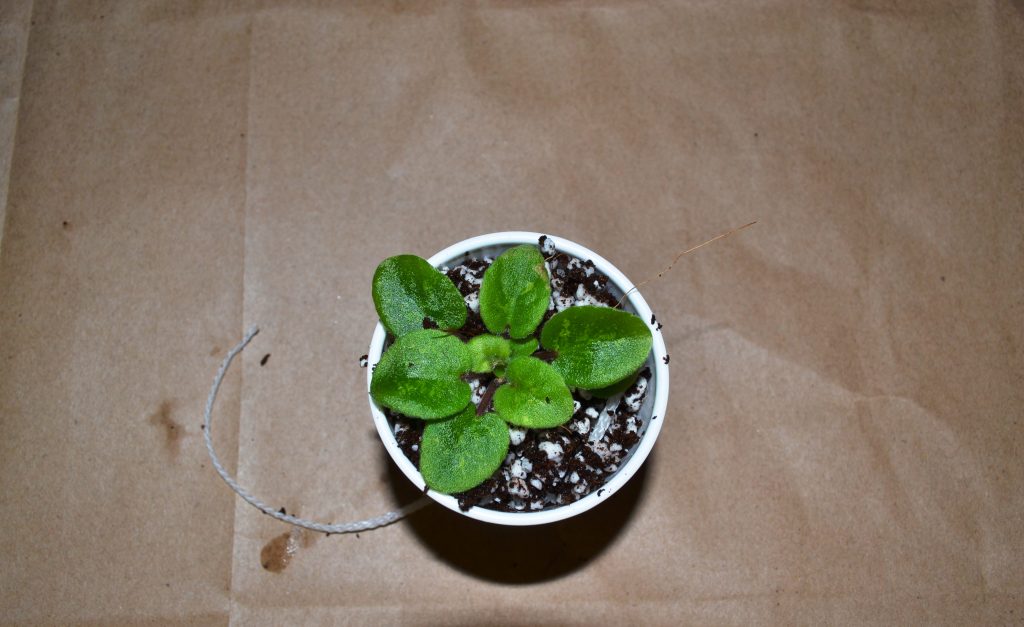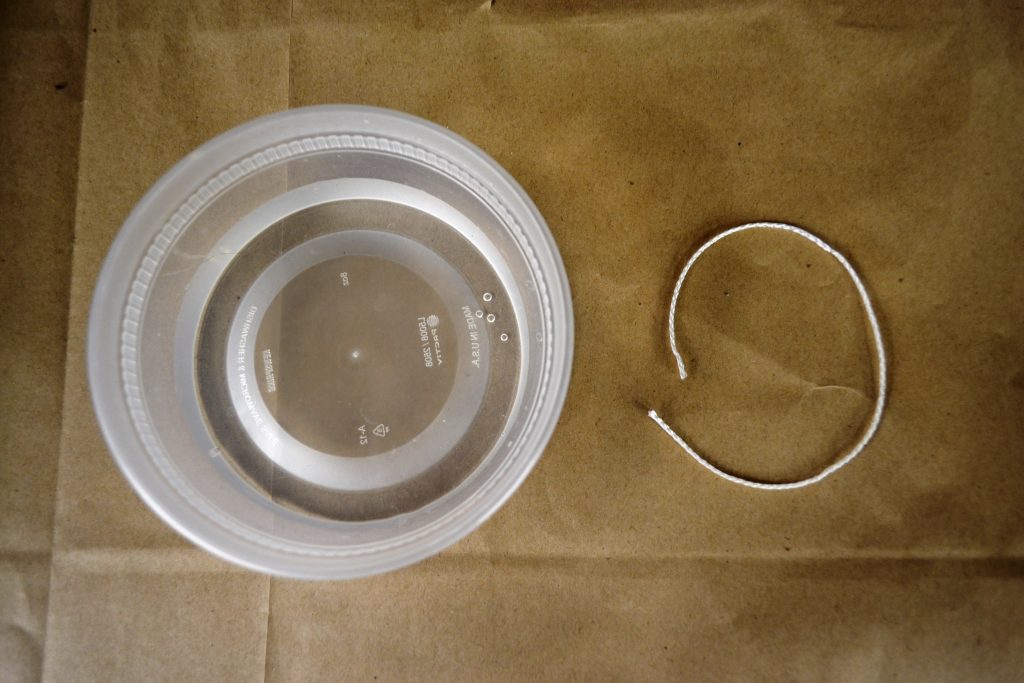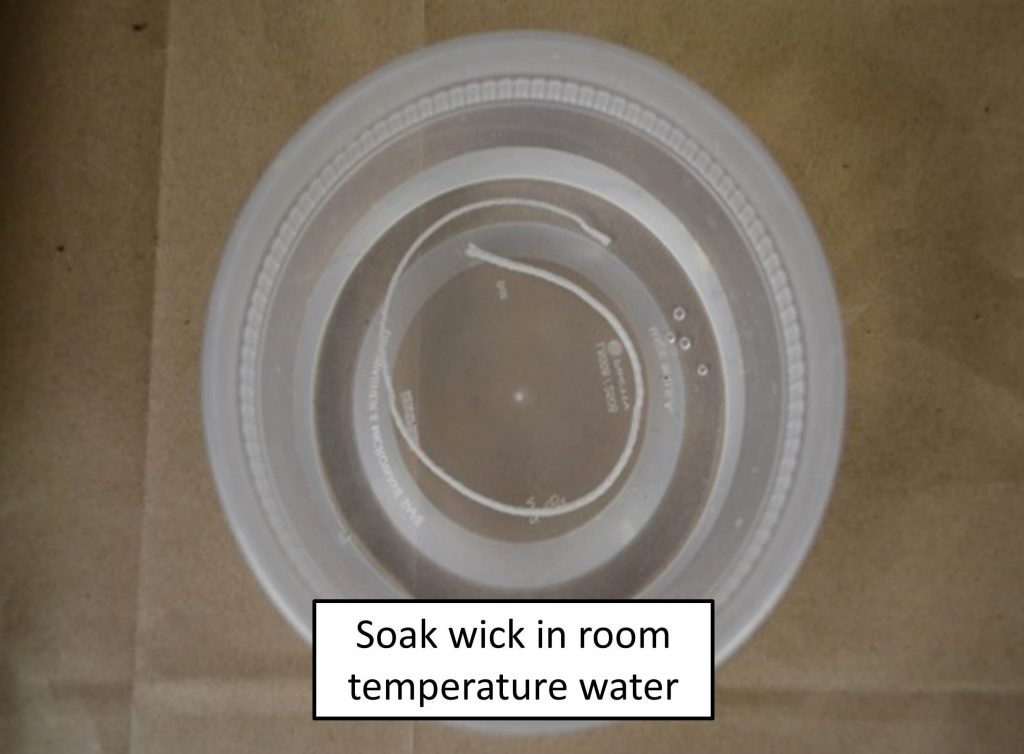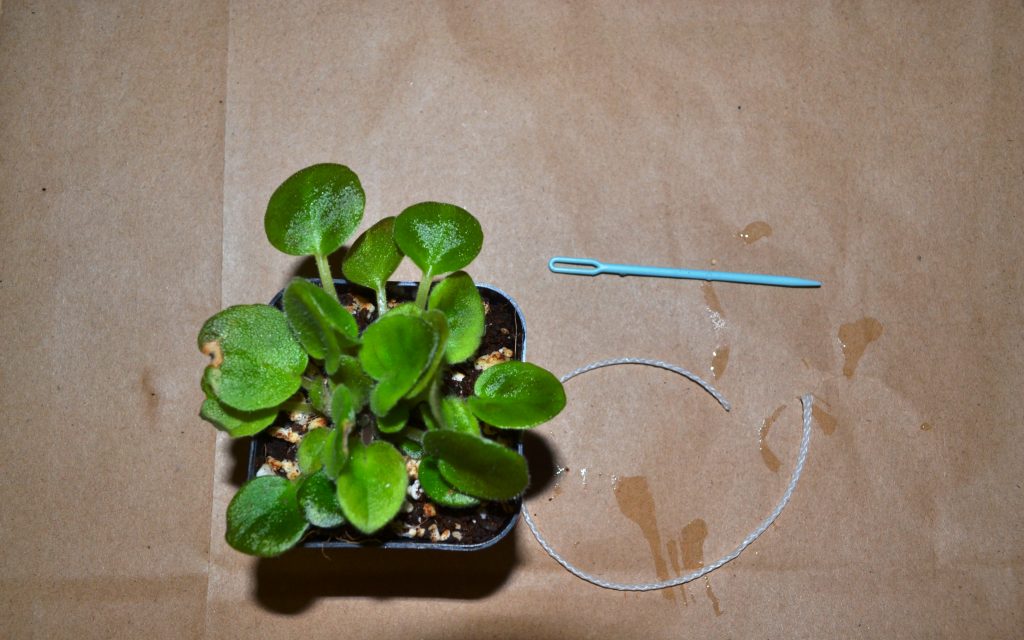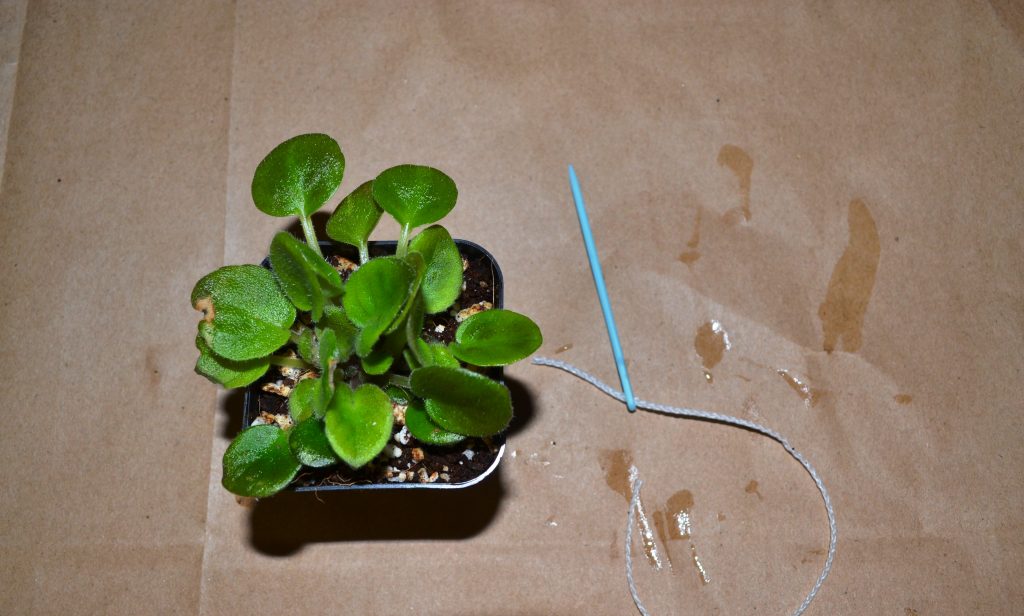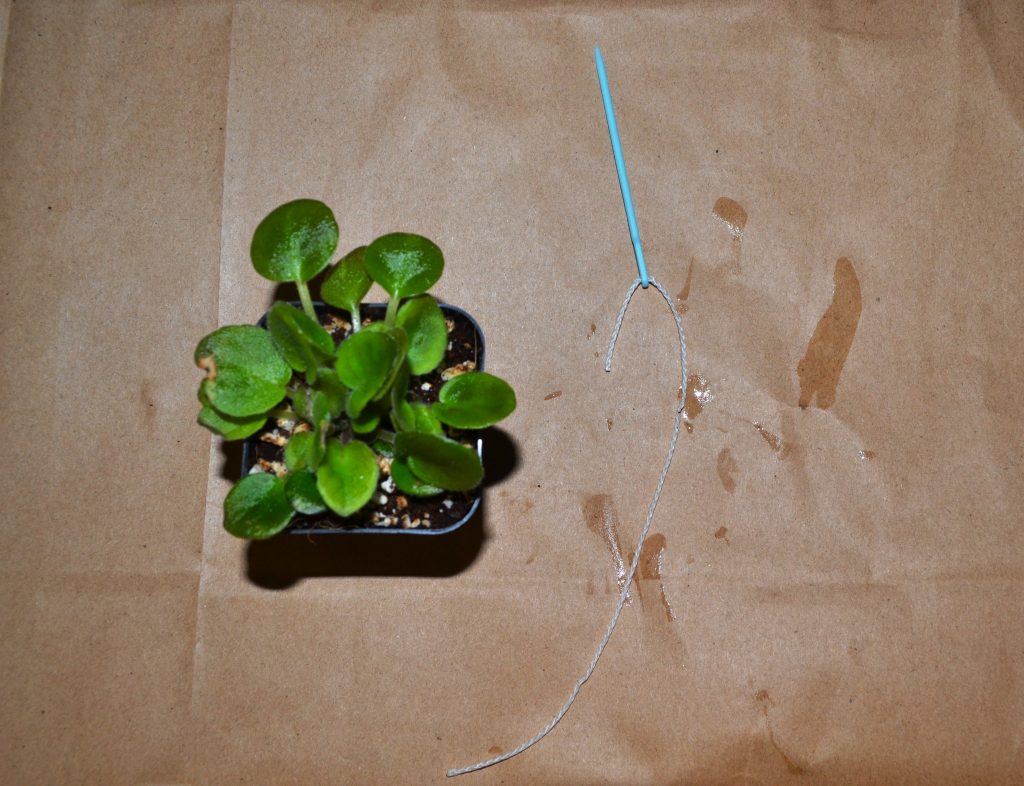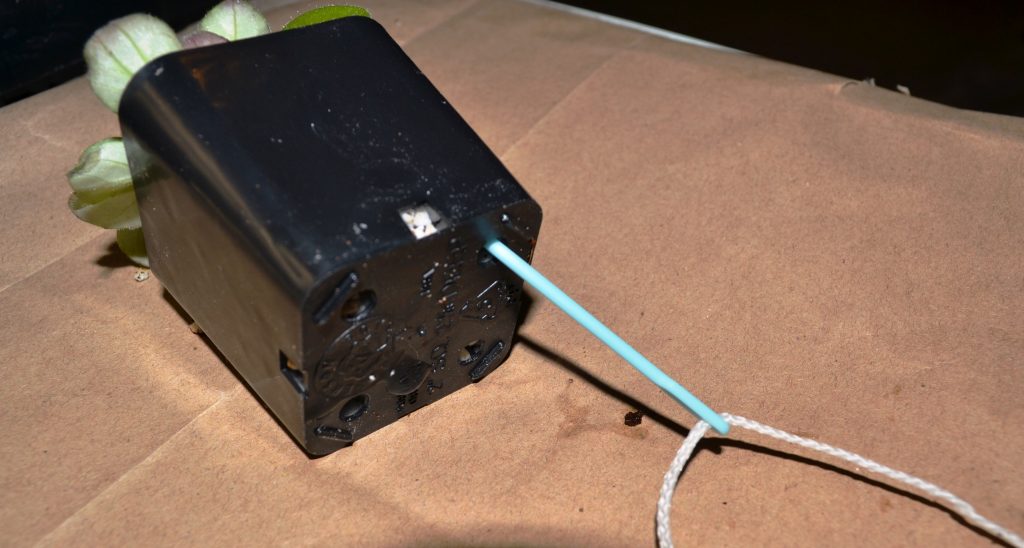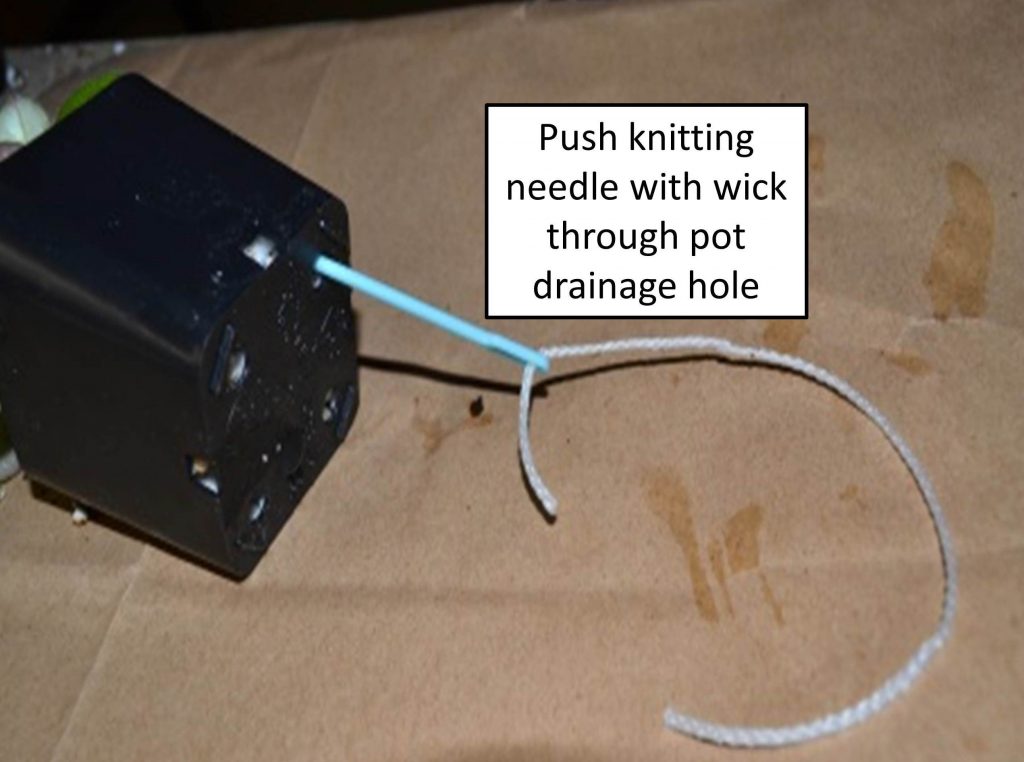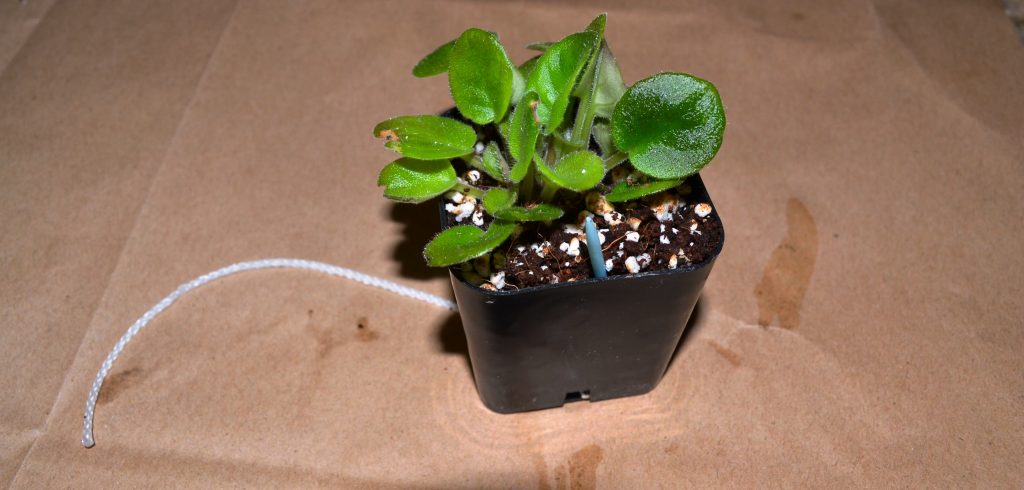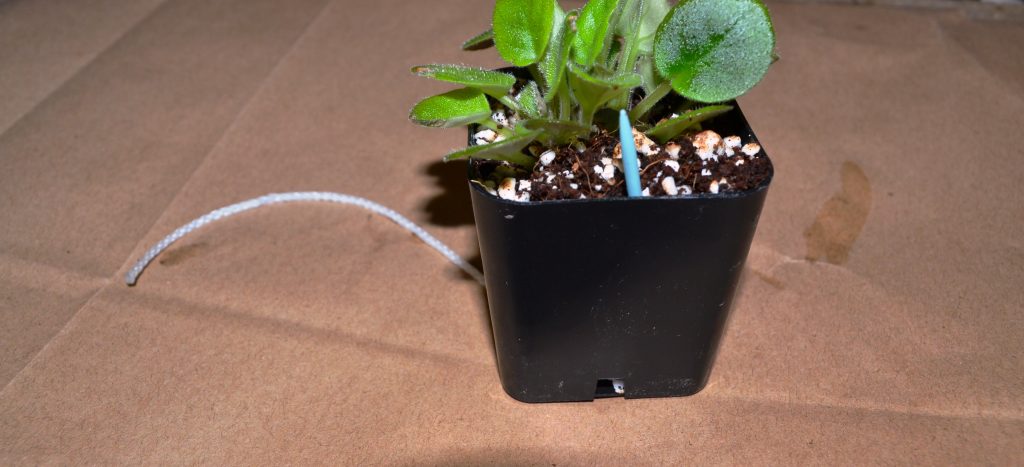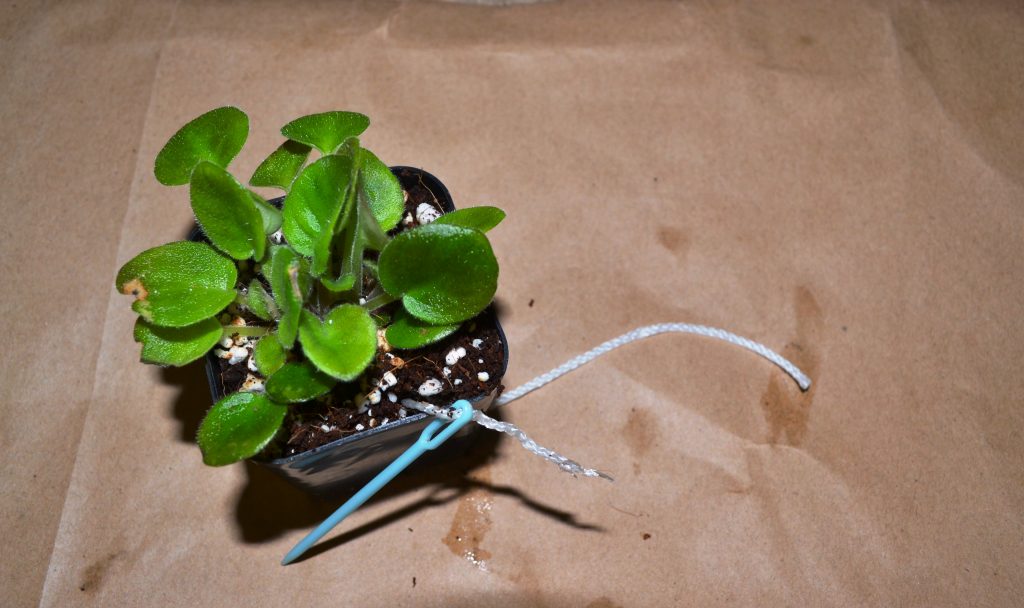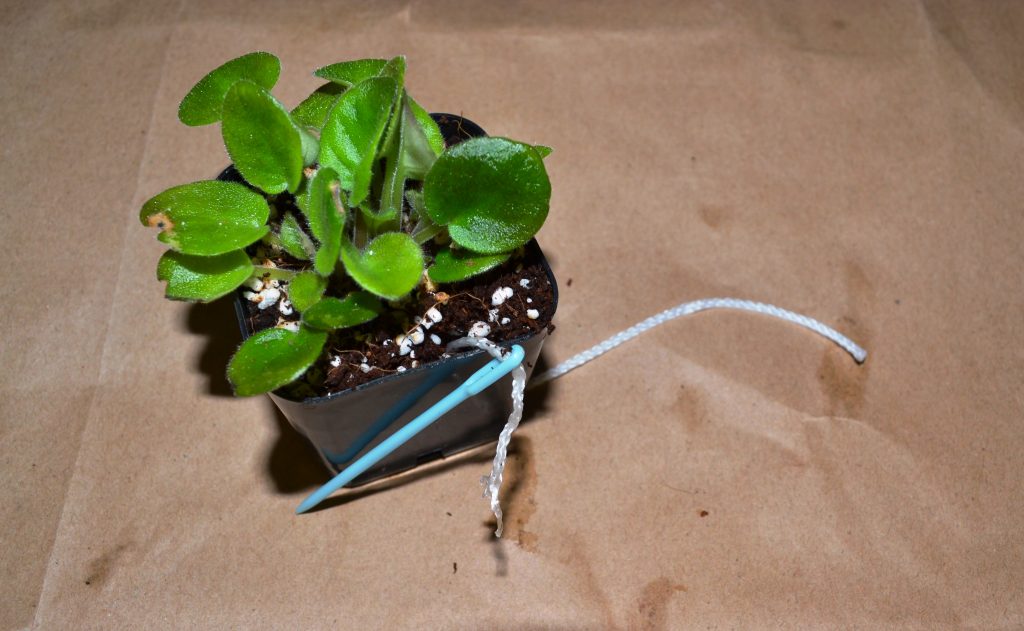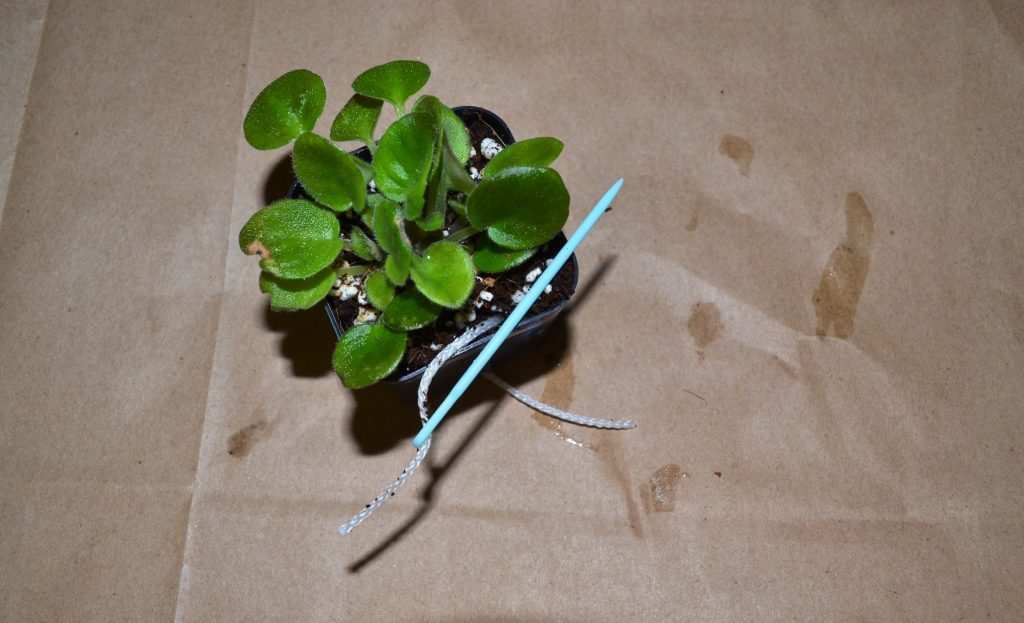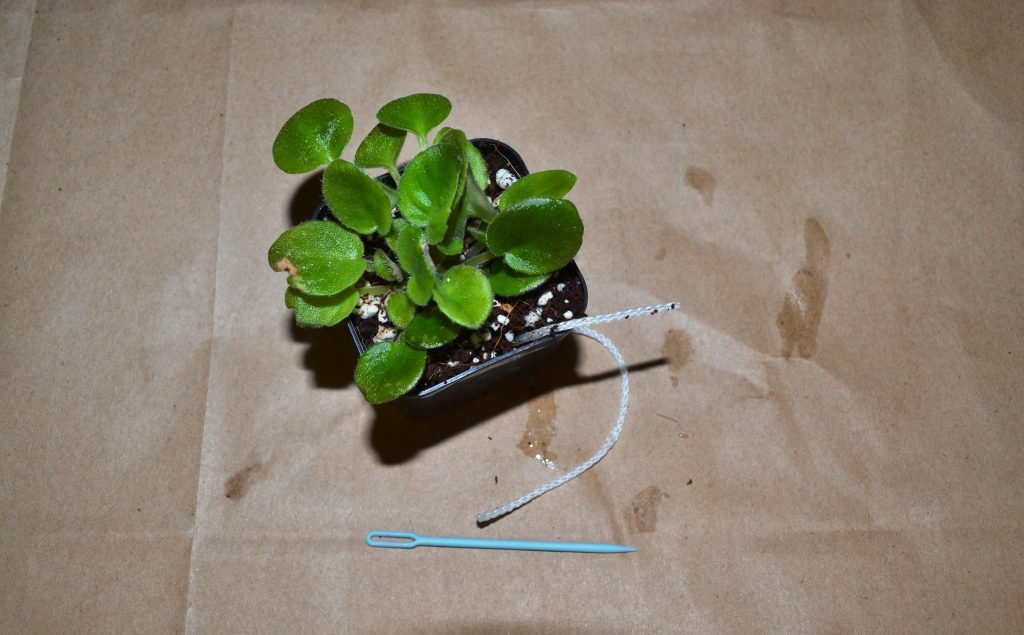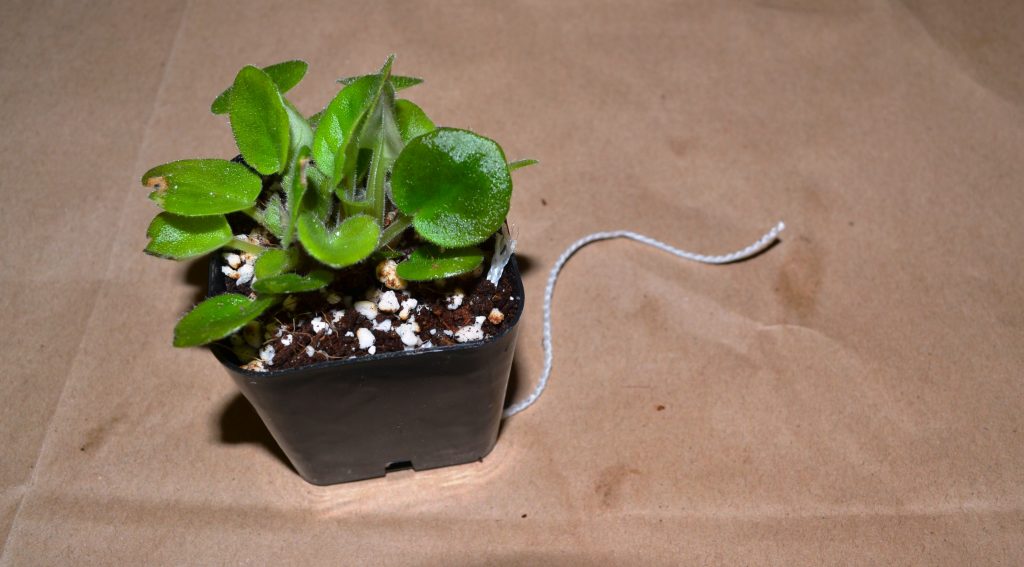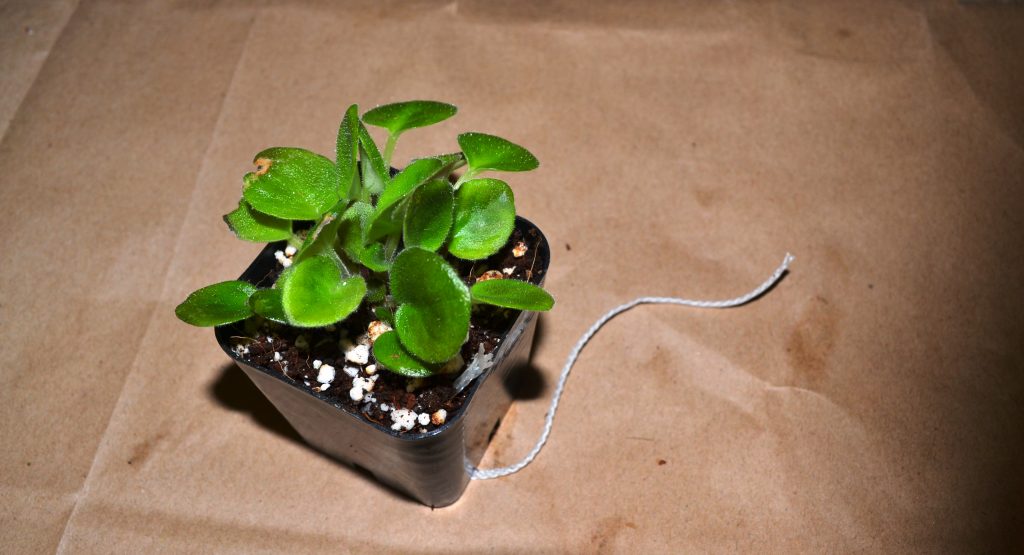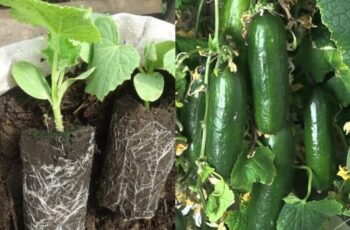Ad Blocker Detected
Our website is made possible by displaying online advertisements to our visitors. Please consider supporting us by disabling your ad blocker.
Why wick African Violet plants?
- The number one answer to this question would be to save time, especially if you have over 20 plants.
- The second answer would be, that African Violets on wicks grow faster in my personal experience.
- Wick watering (or wicking) provides African Violets with consistent water, humidity and fertilizer.
- Many times African Violet plants fail to thrive due to under or over-watering, whereas wick watering can provide an evenly moist environment potentially solving this problem.
- Wick watering also avoids the problem of wetting the leaves of the African violet plant (which usually occurs when top watering the plant) as it provides the correct amount of water required by the plant from below the pot.
What is wick watering?
- Wick watering (or wicking or wick irrigation) is a watering method for African Violet plants providing consistent water when needed by the plant.
- Wick watering can also act as a means to supply fertilizer and create humidity for African Violet plants.
- Wick watering involves a wick that is threaded through the bottom of a pot to the top. The bottom of the wick sits in another container or reservoir containing water below the pot or on a moist capillary mat
- Through the wick, water is absorbed from the reservoir/capillary mat and transported to the pot where is it distributed through the soil and absorbed (i.e. the soil is moistened and the plant watered).
African Violet Potting Soil Mix
How to wick African Violet plants?
- First of all, if you have a number of plants, then try out wicking on 2-3 plants first, and then convert all your plants to this system if it works for you.
- An African violet wicking kit (or wick system) can be found at a local garden supply store or ordered online from eBay or gardening suppliers. Individual African Violet wicking supplies can also be bought from a store or online instead of purchasing the whole system.
- Another easier alternative is to make your own African Violet wicking system.
- As seen in the picture below, these are the major supplies required for a homemade African Violet wicking system: (this example is for a 3-inch pot in height and 3” in diameter).
- First, cut a piece of wick 6”-8” in length and soak the wick in room temperature water (as shown below). If the wick material does not readily absorb the water, you can add a few drops of soap to the water and soak the wick again.
- Then thread it through one of the drainage holes of the pot and over the top rim of the pot. At the top of the pot, the wick should be 1” in length or less over the rim, and at the bottom, there should be at least 2” of wick dangling from the drainage hole (as shown below).
- NOTE: If you don’t have enough wick length, then it’s not necessary to have the wick dangle 1″ from the top, that is an optional and personal preference.
- In this example we are using a heavy/thick wick, so one wick per pot is enough for a 3” – 4.5” pot. If we used a thin wick, we would insert two individual wicks through two individual drainage holes on either side of the pot, for a 3”-4.5” pot.
- Finally, fill the pot with potting mix and plant the violet.
- Place the threaded wick at the bottom into a water reservoir, in a way that only the wick hangs in the water and any part of the pot does not touch the water (as shown below).
- Make sure the pot is not sitting in water (as shown below), otherwise the roots will start to rot due to overwatering.
How to wick already potted African Violet plants?
- If you already have an African Violet plant that is already potted up and comfortable in its own pot/soil. You can also wick this plant with minimal disturbance.
- First, soak the wick in room temperature water (6-8” in length). If the wick material does not readily absorb the water, you can add a few drops of soap to the water and soak the wick again (as seen below).
- Using a knitting needle or a similar long threading needle, carefully thread the wick by pushing the needle through one of the drainage holes in the pot and gently pull the needle to the top of the pot along with the wick. Try to push the needle through a clear area in the soil avoiding tearing through the leaves (as seen below).
- Once the wick is visible at the top, pull 1” of the wick at the top and cut off the needle. Make sure there is enough wick hanging from below the drainage hole to lay into the water reservoir/container below (as seen below).
What type of wicks can I use for African Violet plants?
